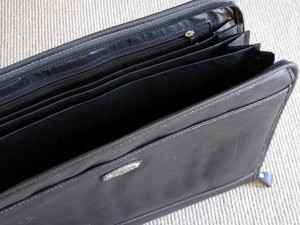Cindy’s Weekly Wisdom ~ Assess Before You Add
Cindy’s Weekly Wisdom
I bet I’m not the only one who has had conversations like this:
- Doing laundry, husband says: “Look at these socks. I think I need to throw them away. In fact, I think I need to get rid a lot of my socks.”
- Me: “Looks like it.”
- “When you go to the mall, can you get me some new socks?”
- “What colors do you need?”
- “Oh, IÂ don’t know. Just get some blue, black, tan, and brown. I’ll get rid of the ones that are getting holey later.”
- Not said: Hold it right there buddy! You’ll declutter after I buy new?
- Said instead: “Most of the socks are in the laundry. I can help you sort the holey ones right now. Then, when we see what you need, I’ll get you some new one.”
He grunted, and nothing more occurred.
I was pleased with the outcome of this conversation. Why? Because, quite honestly, I can’t image that my husband needs new socks. While it’s true that some are holey or getting thin, he seems to have more socks that any one man needs. Maybe I’m wrong. Maybe he does need new socks, but buying new ones before he actually assesses his needs is foolishness. It’s purchasing randomly, and that’s how clutter occurs. In fact, once he culls, I’ll stall on that trip to the store because I want to see which colors of socks he really lacks and truly needs more of.
Another example:
I’m at the store with the girls. We like to paint our nails, and we have a couple dozen different colors of polish. Without assessing what we have, we buy several more bottles, two of which turn out to be almost exactly like colors we already had at home. (It’s amazing how many different variations on reddish-orange polish there are.) Where did we go wrong? Obviously, we purchased on impulse without assessing our needs before we bought.
The longer I declutter a thing (or more) a day, the more I understand that purchasing is the second, and equally important, part of the decluttering equation. True, you’ll never have a decluttered space unless you actually move items out of your house. But it’s just as true that you’ll never achieve or maintain a decluttered state if you continue to acquire items in excess to your needs. Shopping should be a way of acquiring needed goods not an expedition to overload your home with needless purchases that don’t satisfy you and don’t fulfill your needs, so assess before you add.
Today’s Declutter Item
I guess we have had this double adaptor for a long time. So long that the modern houses have a lot more power outlets so we don’t need it anymore. I think I might be showing my age here. Not to mention that fact that they now make power boards with four or more connections including power surge protection which makes this old thing more of a relic than a useful device
Something I Am Grateful For Today
You know, doing kind deeds for others often has instant payback. That good feeling you get for doing the deed is as heartwarming to you as the deed was for them. I took a day trip to Sydney today for the sake of a friend helping another friend and what a lovely day we all had together.
“In daily life we must see that it is not happiness that makes us grateful, but gratefulness that makes us happy.” Brother David Steindl-Rast

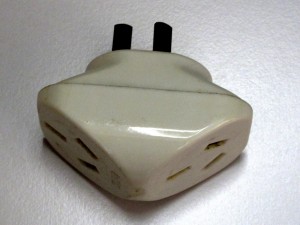

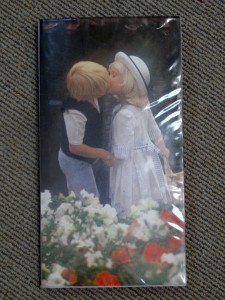

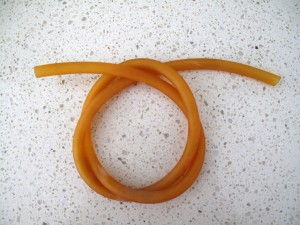
 The Overspent American: Upscaling, Downshifting, and the New Consumer by Juliet B. Schor was published in 1998, but the information seems as relevant today as it did more than a decade ago. The book is geared toward middle and upper-income families, who seem to be caught up in a never-ending cycle of keeping up with the Joneses, no matter who the Joneses are.
The Overspent American: Upscaling, Downshifting, and the New Consumer by Juliet B. Schor was published in 1998, but the information seems as relevant today as it did more than a decade ago. The book is geared toward middle and upper-income families, who seem to be caught up in a never-ending cycle of keeping up with the Joneses, no matter who the Joneses are.
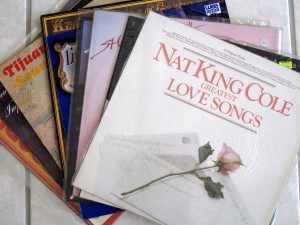
 Colleen ~ I was hoping to say that I bought nothing new this October and personally I feel that I have done that. I have bought nothing that I wanted to buy that’s for sure. Unfortunately though the air conditioner in my car failed on me, and I had to have the compressor and the condenser replaced. I feel rather bitter and twisted about this for a number of reasons that I won’t bore you with. Technically the compressor was replace under warranty but who’s quibbling: it’s new, and it’s now mine.
Colleen ~ I was hoping to say that I bought nothing new this October and personally I feel that I have done that. I have bought nothing that I wanted to buy that’s for sure. Unfortunately though the air conditioner in my car failed on me, and I had to have the compressor and the condenser replaced. I feel rather bitter and twisted about this for a number of reasons that I won’t bore you with. Technically the compressor was replace under warranty but who’s quibbling: it’s new, and it’s now mine.
